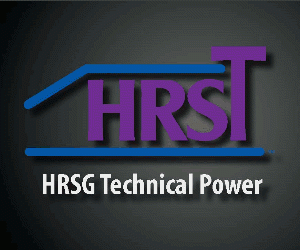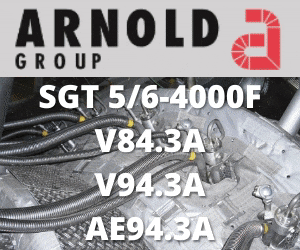Calling it “safer, faster, and deeper” than dry-ice blasting, Jeff Bause, CEO, Groome Industrial Service Group, introduced participants in the 2021 virtual conference of the Combined Cycle Users Group to KinetiClean HRSG tube cleaning, a patented kinetic shockwave technique widely used in other industries but new to combined cycles. It was developed by Explosive Professionals Inc. (ExPro), a detonation-based cleaning services firm with decades of industry experience.
Only a few weeks after his July 27 CCUG presentation, Bause announced on September 7 that Groome had acquired ExPro, uniting the latter’s patented processes and Groome’s 50-plus-year history in providing premium powerplant services—many identified with the hot-gas path in gas-turbine-powered simple- and combined-cycle plants. ExPro executives Brad McGinnis (President/CEO) and Rod Hall (Executive VP) have transitioned to the Groome team, bringing the skills and expertise honed at the 26-yr-old company to increase the number of critical service options available to owner/operators.
One of the stated competitive advantages of KinetiClean over alternative tube-cleaning techniques is that some of the work involved—such as the placement of detonation (a/k/a det) cord—can be performed while other outage work proceeds in parallel. Additionally, limited to no scaffolding is required for this process.
KinetiClean is a three-step process. First, the shock waves created by the det cord curtain dislodges deposits from the HRSG’s finned tubes, then compressed air removes any loosened deposits that remain, and finally, the floor of the HRSG is vacuumed clean.
The process begins with the installation of det cord, described as a flexible textile jacket encasing PETN which is an extremely stable powder plastic explosive. Simply, a curtain of det cord, spaced 12 to 18 in. apart between tube bundles, extends the length of the finned tubes to be cleaned (photo montage). Det-cord acing is based on the nature and volume of foulant as determined by ExPro. The det cord curtain is only armed when the blasting caps are introduced.
When the cord detonates along its length at a velocity of about 23,000 ft/sec (optimal for hard deposits), the ensuing shock waves remove debris from tube surfaces and fins. Importantly, no detonation material or tools touch any HRSG internal surfaces.
Next, patented air vestibule machines remove loosened debris that settled on fins below with high volume/high pressure air. The machine is digitally programmable to ensure full tube-bundle coverage. Once all debris has been removed from the fins, vac trucks are utilized to collect the material from the HRSG floor. The primary focus of this turnkey operation is to mitigate the chance of any opacity issues upon startup. A typical job takes six to eight 12-hr shifts to complete, meaning the cleaning of an F-class HRSG is a three- or four-day project.
Knowing that the mention of explosives was likely to send palpitations to the collective heart of the audience, Bause included as one of his first slides a record of the industry’s safety and training record—specifically, no reportable incidences, lost time, or fatalities over the last three years, each representing close to 30,000 hours of work. A crew of seven typically does the work, including one licensed blaster.
Bause gave several case studies to wrap up, each exhibiting four to six tons of material removed and a 4- to 5-in.-H2O differential-pressure improvement. During one site’s work, damper repair work was conducted in parallel. Other slides quantify the general benefits of tube cleaning, although few combined-cycle personnel need any convincing on that front.
During the Q&A, attendees learned that 30 minutes following detonation, workers can enter the HRSG; noise levels are not expected to impact neighbors; that the technique is effective at removing ammonium bisulfate deposits; and the technique is not recommended for catalyst cleaning, although the patented air vestibule machine could be adapted for non-scaffold cleaning of the SCR catalyst at some point in the future.





